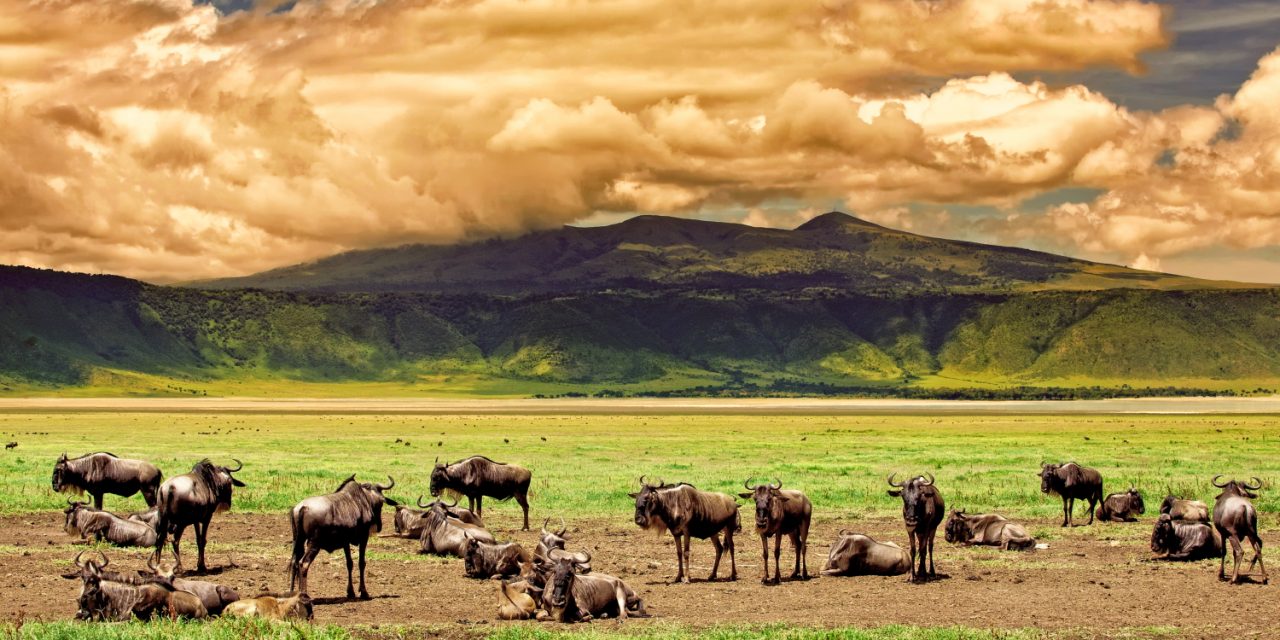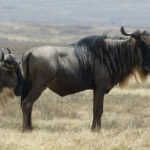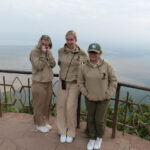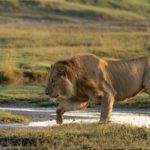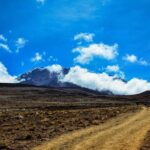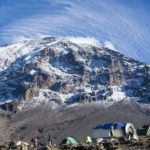What if I told you that the largest unfilled volcanic caldera in the world is teeming with some of the most diverse wildlife on the planet? Nestled in the heart of Tanzania, the Ngorongoro Crater, measuring about 18 kilometers in diameter, is a natural wonder playing host to around 25,000 large animals. This unique geological formation offers a sanctuary for many species, creating a vibrant tapestry of life within its bounds.
Ngorongoro Crater, formed over 2 million years ago, is a breathtaking result of a collapsed volcano. This UNESCO World Heritage Site is not only significant for its geological marvel but also boasts one of the densest populations of lions in Africa. The harmonious coexistence of wildlife and lush landscapes presents an ecological haven, attracting researchers and enthusiasts from every corner of the globe.

Exploring the Geological Marvel of Ngorongoro Crater
Ngorongoro Crater, located in northern Tanzania, is one of the largest volcanic calderas in the world. The crater’s formation began around three million years ago after a massive volcanic eruption. This event caused the volcano to collapse inward, creating a huge bowl-shaped depression. The crater, now 610 meters deep, spans approximately 260 square kilometers. This makes it a natural amphitheater teeming with diverse ecosystems.
The floor of the Ngorongoro Crater is a vibrant mosaic of various landscapes. Visitors can find open grasslands, acacia forests, and swamps. These habitats support a vast array of wildlife. Remarkably, the crater is home to the endangered black rhino, which roams freely in the plains. This rich biodiversity makes the crater a unique natural wonder.
Geologists and ecologists are fascinated by the Ngorongoro Crater for both its geological features and its wildlife. The walls of the crater have remained largely intact, providing a natural enclosure for the flora and fauna. This geological stability has allowed plant and animal species to thrive. Additionally, the crater acts as a natural water catchment, ensuring the availability of water year-round. This has played a crucial role in maintaining the ecological balance.
The Ngorongoro Crater is not only an ecological haven but also a window into Earth’s past. Studying the crater’s geological layers offers insights into the planet’s volcanic activity. Moreover, archaeological sites within the crater, like Olduvai Gorge, reveal clues about early human history. These discoveries underscore the crater’s importance to both natural and human history. Its significance continues to intrigue scientists and tourists alike.
Formation and Historical Significance
The formation of the Ngorongoro Crater began with a series of massive volcanic eruptions. As the volcano spewed lava and ash, it gradually emptied its magma chamber. Over time, the emptied chamber could no longer support the weight of the volcano, leading to a colossal collapse. This incredible event formed the expansive caldera we see today. The crater remains an iconic geological structure, drawing scientists from around the world.
Archaeologists have uncovered numerous artifacts within the Ngorongoro region. These artifacts date back millions of years, providing a wealth of knowledge about early human life. Sites like Olduvai Gorge are particularly significant. They have produced some of the oldest known fossils of human ancestors. Such discoveries have established the area as a pivotal location for studying human evolution.
The historical significance of Ngorongoro Crater is not limited to ancient times. The Maasai people have inhabited the crater for centuries. Their relationship with the land showcases a unique blend of culture and nature. The Maasai’s traditional practices have complemented the ecosystem, allowing both people and wildlife to thrive. This harmony between humans and nature is an enduring feature of the region.
Today, the Ngorongoro Conservation Area stands as a testament to the balance between preservation and use. Wildlife conservation efforts have been integral in maintaining the crater’s biodiversity. This delicate balance ensures that the crater can be enjoyed by future generations. Visitors can witness the stunning beauty of this natural wonder while appreciating its rich history. The crater’s legacy lives on through both its geological and cultural significance.
Wildlife Diversity in Ngorongoro Crater
The Ngorongoro Crater is home to an extraordinary variety of wildlife. From majestic predators to gentle grazers, the diversity is astounding. Over 25,000 large animals live within the crater, making it a haven for wildlife enthusiasts. Key species include lions, elephants, and buffaloes. This rich population ensures that the ecosystem remains balanced and vibrant.
One of the most fascinating aspects of the crater is its resident lion population. The lions here have one of the highest densities in Africa. These powerful predators play a crucial role in maintaining the ecological balance. Their presence keeps the herbivore populations in check. This dynamic interaction is essential for the health of the entire ecosystem.
Birdwatchers are also in for a treat when visiting Ngorongoro Crater. The area boasts over 500 bird species, making it a paradise for ornithologists. Some of the notable birds include flamingos, ostriches, and crowned cranes. The seasonal changes bring different bird species, adding to the excitement. This makes the crater an attractive destination for bird enthusiasts year-round.
Smaller animals also contribute significantly to the crater’s biodiversity. Hyenas, servals, and various primates thrive in this protected area. These animals play important roles in the food chain, ensuring a balanced environment. The presence of diverse species of reptiles and amphibians adds another layer of richness. All these creatures together create a complex and thriving ecosystem within the crater.
Ecotourism and Conservation Efforts at Ngorongoro
Ecotourism plays a significant role in the Ngorongoro Conservation Area. It offers a sustainable way to explore the crater’s unique ecosystems. Tours and safaris are designed to have minimal impact on the environment. Visitors are encouraged to follow guidelines that protect the natural habitat. This approach helps ensure the long-term health of the area’s ecosystems.
Revenue from tourism supports various conservation projects. These projects focus on maintaining the habitat and protecting endangered species. The money funds programs that monitor animal populations and conduct scientific research. It also supports anti-poaching efforts, which are crucial for the survival of species like the black rhino. Therefore, tourism directly contributes to the conservation of precious wildlife.
The involvement of local communities is another key aspect of conservation efforts. The Maasai people, who have lived in the area for centuries, are integral to these projects. They help manage the land based on their traditional knowledge and practices. This collaboration ensures that conservation measures are culturally appropriate and sustainable. The Maasai also benefit economically from tourism, making it a win-win situation.
Environmental education is a critical component of conservation strategies at Ngorongoro. Programs are in place to educate both visitors and locals about the importance of biodiversity. Educational tours and workshops highlight the need to protect the environment. These initiatives aim to foster a sense of responsibility and stewardship. This awareness helps build support for ongoing conservation efforts.
Research is continuously conducted to improve conservation techniques. Scientists study everything from animal behavior to habitat conditions. Their findings help develop better strategies for managing the ecosystems. These studies are essential for adapting to changing environmental conditions. Research ensures that the Ngorongoro Conservation Area remains a haven for wildlife long into the future.
Key Takeaways
- Ngorongoro Crater is a huge volcanic caldera in Tanzania.
- It hosts about 25,000 large animals like lions and rhinos.
- The crater formed after a volcano collapsed millions of years ago.
- It’s an important site for both natural wonders and human history.
- Ecotourism helps maintain the wildlife and supports local communities.


